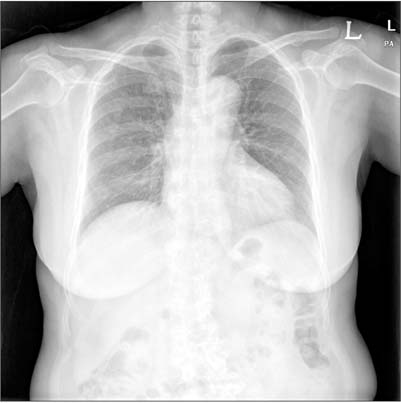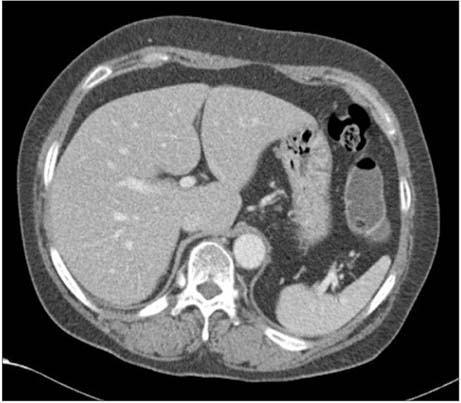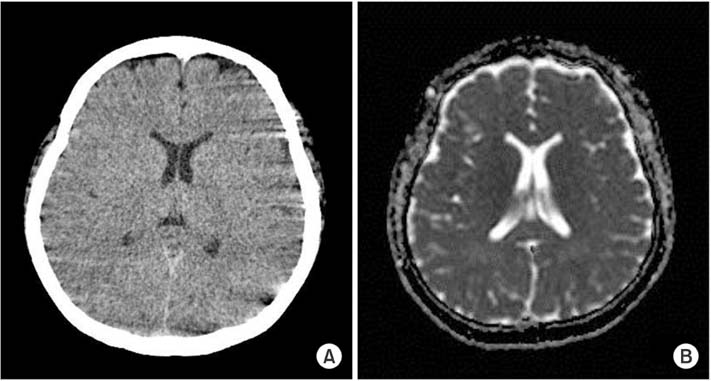Ann Surg Treat Res.
2016 Mar;90(3):179-182. 10.4174/astr.2016.90.3.179.
Acute hyperammonemic encephalopathy after 5-fluorouracil based chemotherapy
- Affiliations
-
- 1Department of Surgery, Ewha Womans University School of Medicine, Seoul, Korea. eastgate@ewha.ac.kr
- KMID: 2155052
- DOI: http://doi.org/10.4174/astr.2016.90.3.179
Abstract
- 5-Fluorouracil (5-FU) based chemotherapy has been commonly used to treat metastatic or advanced colon cancer as an adjuvant chemotherapy. Although the side effects of 5-FU such as gastrointestinal problems and neutropenia and thrombocytopenia are common, not many cases of 5-FU related encephalopathy are reported. Hyperammonemic encephalopathy is a rare central nervous system toxicity following 5-FU chemotherapy manifesting as altered mental status with elevated ammonia levels with no radiologic abnormality. We report one case of 5-FU induced hyperammonemic encephalopathy occurring after Folfox4 (oxaliplatin, folinic acid and 5-fluorouracil) chemotherapy in a colon cancer patient who presented with confused mental status soon after the chemotherapy and review the 5-FU related encephalopathy.
MeSH Terms
Figure
Reference
-
1. Mayer RJ. Moving beyond fluorouracil for colorectal cancer. N Engl J Med. 2000; 343:963–964.2. Porcello Marrone LC, Marrone BF, Pascoal TA, Schilling LP, Soder RB, Ferreira SS, et al. Posterior Reversible Encephalopathy Syndrome Associated with FOLFOX Chemotherapy. Case Rep Oncol Med. 2013; 2013:306983.3. Truman N, Nethercott D. Posterior reversible encephalopathy syndrome (PRES) after treatment with oxaliplatin and 5-fluorouracil. Clin Colorectal Cancer. 2013; 12:70–72.4. Chang YY, Lin JK, Jiang JK. Oxaliplatin-related hyperammonaemic encephalopathy in a patient with colon cancer. Colorectal Dis. 2012; 14:e821.5. Koenig H, Patel A. Biochemical basis for fluorouracil neurotoxicity. The role of Krebs cycle inhibition by fluoroacetate. Arch Neurol. 1970; 23:155–160.6. Kikuta S, Asakage T, Nakao K, Sugasawa M, Kubota A. The aggravating factors of hyperammonemia related to 5-fluorouracil infusion: a report of two cases. Auris Nasus Larynx. 2008; 35:295–299.7. Teraishi F, Suzuki T, Nakamoto M, Chikuba A, Nezu M, Shimamura H, et al. A case of hyperammonemic encephalopathy in a patient with recurrent colon cancer treated with modified FOLFOX6. Gan To Kagaku Ryoho. 2009; 36:867–869.8. Volk J, Reinke F, van Kuilenburg AB, van Gennip AH, Schlichting C, Ganser A, et al. Safe administration of irinotecan, oxaliplatin and raltitrexed in a DPD-deficient patient with metastatic colon cancer. Ann Oncol. 2001; 12:569–571.9. Malet-Martino M, Martino R. Clinical studies of three oral prodrugs of 5-fluorouracil (capecitabine, UFT, S-1): a review. Oncologist. 2002; 7:288–323.10. Advani PP, Fakih MG. 5-FU-induced hyperammonemic encephalopathy in a case of metastatic rectal adenocarcinoid successfully rechallenged with the fluoropyrimidine analog, capecitabine. Anticancer Res. 2011; 31:335–338.
- Full Text Links
- Actions
-
Cited
- CITED
-
- Close
- Share
- Similar articles
-
- Four cases of transient hyperammonemic encephalopathy following continuous infusion of 5-fluorouracil
- Acute Hyperammonemic Encephalopathy with Features on Diffusion-Weighted Images: Report of Two Cases
- Reversible Burst-suppression Pattern of Acute Hyperammonemic Encephalopathy
- Non-cirrhotic Hyperammonemic Encephalopathy with Portosystemic Shunt
- A Case of Wernicke's Encephalopathy Following Fluorouracil-based Chemotherapy




